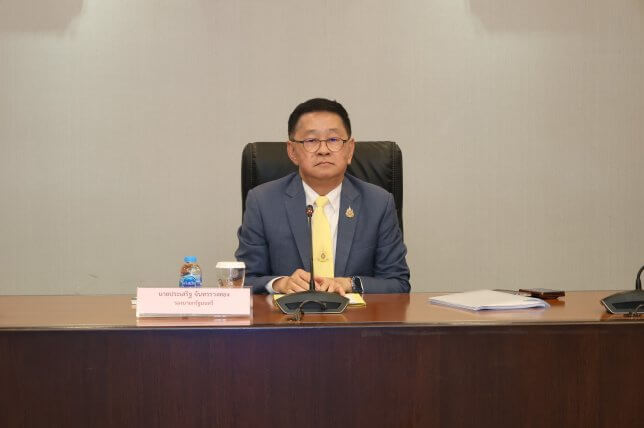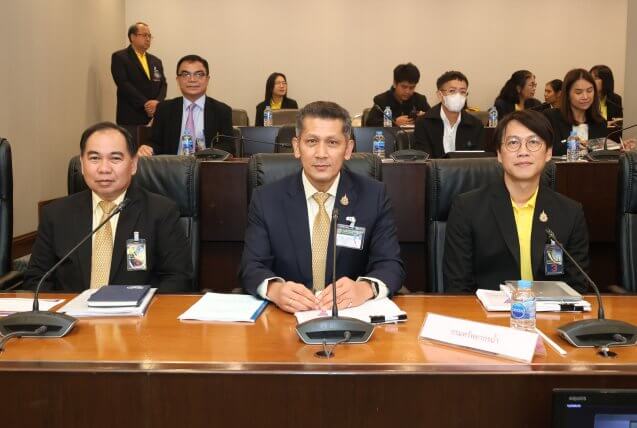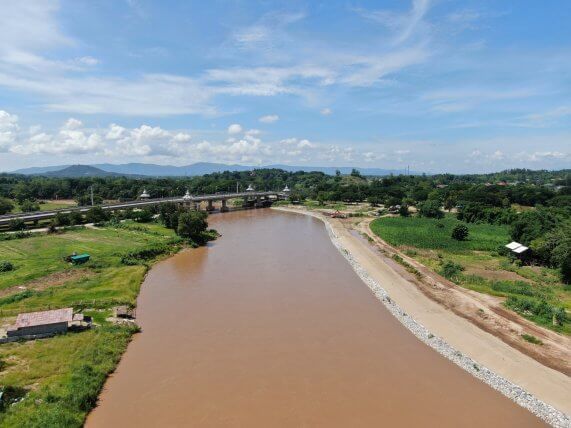
On July 30, 2025, at 3:00 p.m., Mr. Prasert Chanthararuangthong, Deputy Prime Minister, chaired the 2/2025 meeting of the Subcommittee on Driving the Resolution of Surface Water Quality Issues at Room 301, Command Building 1, Government House, with relevant agencies in attendance. The meeting approved measures to address contamination beyond standard limits in the Kok River, its tributaries, the Sai River, and the Mekong River.
Mr. Prasert stated that the government is not ignoring the issue of contamination in the Kok River, its tributaries, the Sai River, and the Mekong River. The government has been working urgently to solve the problem at both the national and international levels through various cooperation mechanisms to seek sustainable solutions. The key outcomes of the meeting are summarized as follows:
- On the situation and trends of contamination in water bodies and sediments, the levels remain relatively stable without significant changes. Monitoring by the Pollution Control Department (PCD) continues to find arsenic concentrations exceeding the prescribed standards in several locations. However, test results of tap water, aquatic animals, agricultural products, as well as urine samples from residents in the affected areas, remain within acceptable safety standards.
- In terms of past operations, a Forward Command Center was established, headed by the Deputy Minister of Interior. The Center has continuously expedited efforts to address the problem, serving as a coordination mechanism between provincial and central authorities to ensure timely actions. These include surveillance, providing assistance to affected communities, and disseminating accurate official information to the local population.
- For proactive measures, the design of sediment-trapping systems based on the Nature Based Solution (NBS) approach has been expedited, with construction expected to commence in early dry season 2025. The primary objective of building sediment weirs is to trap sediments in order to reduce contamination in both water bodies and sediments. The design outcomes will also be presented for public consultation with affected stakeholders, and the proposed construction plans are expected to be submitted to the Cabinet for consideration and approval by the end of August 2025.
- In terms of international cooperation, member countries of the Mekong River Commission (MRC)—namely Thailand, the Lao PDR, Cambodia, and Viet Nam—together with the MRC Secretariat (MRCS), have convened meetings on Joint Water Quality Monitoring and conducted joint field visits in Chiang Rai Province. This marked the starting point of addressing the issue with the involvement of international organizations possessing relevant expertise.
In addition, Mr. Prasert further stated that a joint survey team between Thailand and Myanmar will be established to examine data and develop measures for preventing and mitigating river contamination, with the Mekong River Commission (MRC) also participating in the process. Moreover, experts from Thailand and Myanmar held their first meeting in Naypyidaw, Myanmar, during which both sides exchanged information and agreed that conducting joint field surveys to establish common conclusions and factual evidence would serve as an appropriate starting point for resolving the issue.
To strengthen clarity, the Ministry of Foreign Affairs has scheduled further discussions with the Myanmar government by late August 2025.





